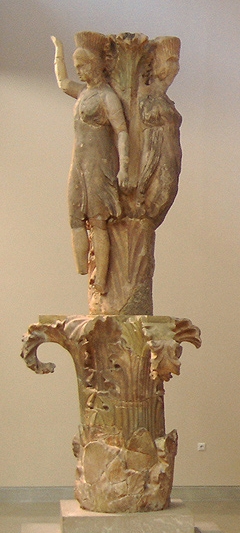Facts About Dancers of Delphi
The Dancers of Delphi, also known as the Acanthus Column, are a captivating trio of female figures carved in high relief. They stand gracefully atop an acanthus column, located near the sanctuary of Pythian Apollo at Delphi. These remarkable figures were unearthed between May and July of 1894. The column itself rises approximately 13 meters, with each of the three women measuring 1.95 meters in height, creating the illusion of a graceful dance. It is believed that this column once supported a massive tripod, with the dancers elegantly positioned at its apex.
Initially, experts estimated the fragments to date back to before 373 BC, but more recent research suggests a timeframe around 330 BC.
There are a couple of theories regarding the precise creation date of the Dancers of Delphi. One theory proposes around 375 BC, potentially commemorating a naval victory over Sparta. Another theory posits the creation in 330 BC, consistent with the style of other monuments from that period. The figures may represent the three daughters of Cecrops I, symbolizing the fertility of the land.
These enchanting dancers have inspired many, including composer Claude Debussy. His piano piece "Danseuses de Delphes" was directly influenced by this sculptural group. Today, you can admire the column and its mesmerising figures at the Delphi Archaeological Museum. They continue to evoke various interpretations and scholarly discussions about their origins and significance.

 North Macedonia
North Macedonia